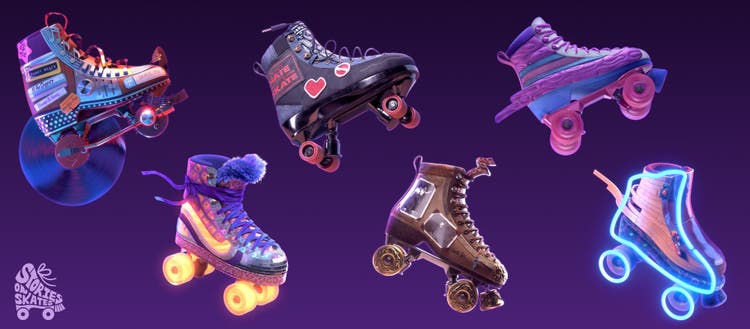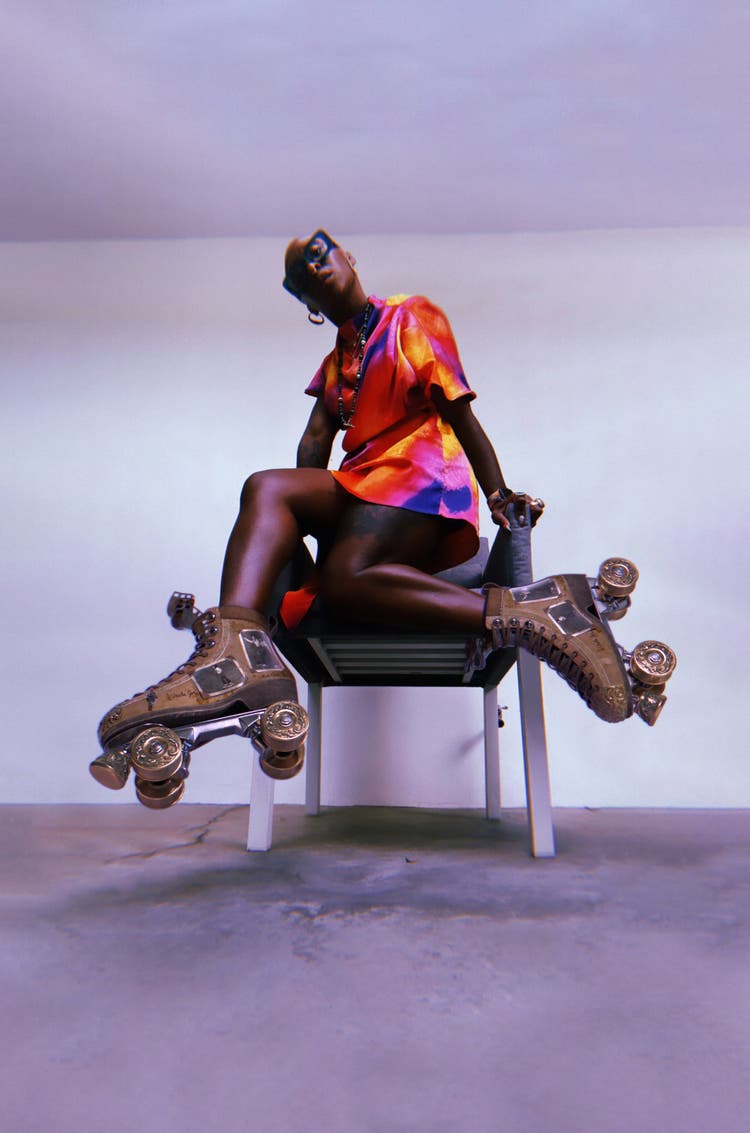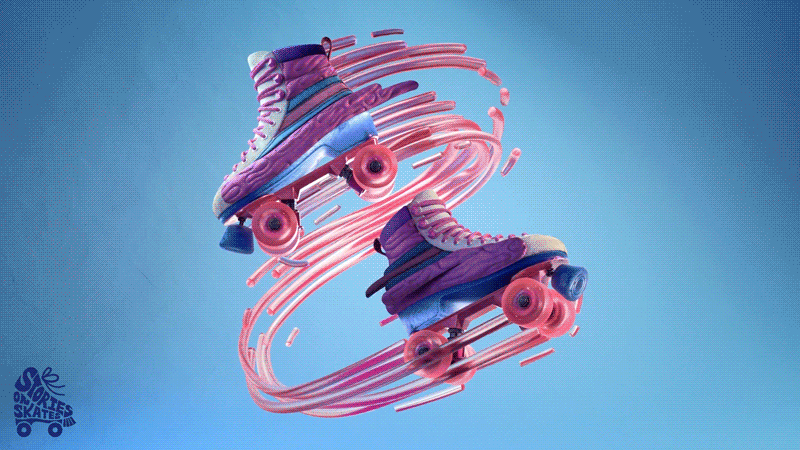Skate history is Black history
From Instagrammers in Berlin to TikTok creators in the U.S., roller-skating has taken over social media with mesmerizing choreographies, and music that captivate skaters and spectators alike. It may be tempting to say that roller skating is making a comeback, but for Black skaters, it never left. The stories that have shaped skate culture today are rooted in rich Black history and thrive because of the Black skate community around the world.
So we set out to immortalize history alongside actor, artist, activist, and storyteller, Cynthia Erivo as we reveal Stories on Skates — a project that transforms these narratives into 3D roller skate designs to share stories and history from the rink.
When it came time to bring these stories to life in a vivid and tangible way, Substance 3D texturing tools seemed like the perfect fit. From style to community, each 3D skate design tells a story about history that has influenced culture around the world.
“It’s been a joy to work with Cynthia on Stories on Skates and bring her bold, bright energy to this campaign. This project illuminates how Adobe’s 3D vision goes beyond just a set of tools and brings creative visions and culture to life in new, immersive mediums. With Cynthia’s help, we hope Stories on Skates shines a light on the joy and impact of skating culture for the Black community,” Sebastien Deguy, VP 3D & immersive at Adobe said of the collaboration.
Skate design that captures a story
The Skate with Soul (Music).
When hip-hop and rap were being shunned on MTV and the radio, roller rinks became the stage for hip-hop and rap headliners. Rinks like Skateland in Compton, CA, became a beacon for the vanguard of music that came to define an era and a community.
The design of the Skate With Soul skate takes inspiration from the different genres that have made it to the rink like funk, soul, rap, and hip-hop, with textures that remind us of the era when skating and music went hand in hand like clear acrylic, vintage records, and auxiliary cables.
Skate choreography, much like the music that inspires it, is highly regional and brimming with local pride. From Kentucky Throws and New York Trains to Baltimore Snapping and Chicago Nutcrackers, these are the moves that have made Black skate culture iconic.
Illustrating the natural repetition and organic flow of these choreographies was essential for the Rattle & Roll skate and influenced the patterns of organic textures like leather, suede, and quilted fabric.
The Self-Expression Skate (Style).
Custom skates were coming out of L.A. in the 80s as a means of self-expression. From dancing shoes to Air Jordans, anything could be made into a custom pair of skates. That energy is still true today, as evidenced by the vibrant style and passion of the people keeping skate culture alive both in the U.S. and globally, contributing to a roller skate shortage.
A “maximalist” design for the Self-Expression skate draws on the passion of the community in a way that feels unique, bold, and unapologetic. We pulled from unexpected and unique textures like disco ball tiles, neon, fur, and chrome.
The Power Skate (Empowerment).
The Black roller-skating community has found ways to thrive despite discriminatory rules and practices at roller rinks, many of which still exist today. Signs that read “no saggy pants”, “no fiberglass wheels”, “no headphones” aim to curb Black skaters from visiting their local rinks. But as roller rinks around the world close, the places that embrace the Black community have been the ones that thrive.
The design for the Power Skate is a celebration of the elements that give shape to Black skate culture. It embraces the nuances that society tried to prohibit and empowers skaters to express themselves with textures like denim, fiberglass, paisley bandanas, and brass.
The Fam Jam Skate (Community).
As early as the 1950s, roller rinks have been spaces for the Black community to come together, welcoming anyone who shared this unique passion. On the wood they found freedom of expression, at the skate counter they found friendship, and in those friendships they found a community that has lasted generations.
The roller rink was a symbol of community, so the design for the Fam Jam skate recreates the physical space of the rink, pulling in textures like wood paneling, metal lockers, and funky carpets.
The Rink Rat Skate (Legacy).
“Rink Rats” is an affectionate name for people who grew up going to roller rinks and whose families had a legacy of doing the same. For Black skaters, roller-skating connects to a shared history, culture, and city. It’s an important part of the legacy they hope to pass on.
Each skate in the Rink Rats design has a unique style: one represents a proud history while the other looks to the future. Textures that demonstrate the passing of time are used across both, like embroidery, halftones, and leather.
It’s not a comeback if you never left
The music, the moves, and the culture around Black skating have informed the revival we see today. The excitement for the pastime is infectious and the desire to grab a pair is undeniable for people across the globe. But for lifelong Black skaters whose families have grown up on the rink, roller-skating isn’t making a comeback, because for them it never left.
Want more Stories on Skates? Find it here:
We are excited to launch our Stories on Skates toolkit, where Adobe users can experiment and customize their own pair of 2D or 3D skates in Photoshop, Illustrator, Fresco or Substance 3D Painter and Sampler. We’ll be sharing our favorite designs so tag us with @Substance3DDesign and #StoriesOnSkates to showcase your creations on or Instagram.
DOWNLOAD THE TOOLKIT HERE
For a deep dive on using Substance 3D Painter, Sampler, and Designer, read our feature in Substance Magazine, featuring an interview with CHARLX, the 3D artists who brought these skates to life.
Looking for more Cynthia Erivo? Check out her new single, Alive, released this month.






